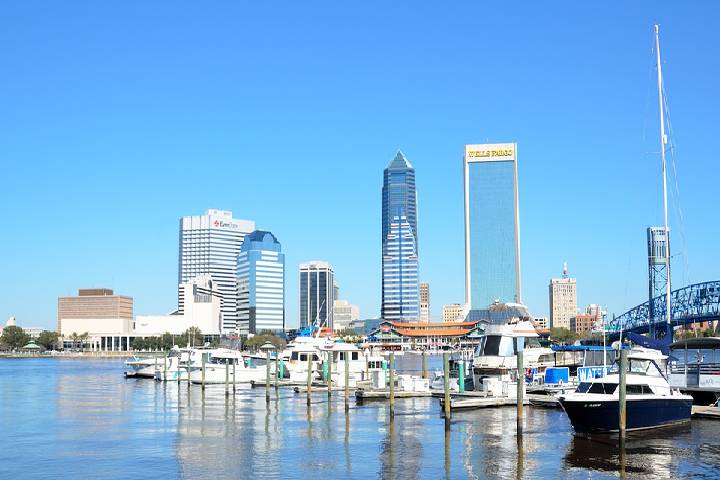How has the use of graphics, graphic design, and visual art affected the history of the city of Jacksonville and the surrounding area? To that matter, has it produced any impact whatsoever? In the essay, we will explore these questions, and you, dear reader, will come away with the answer that the use of images has had a profound effect on Jacksonville’s history.
This is an exciting trail of thought, and one worth pursuing. How do we interact with images? How have we done so across time? From the letters you are reading, to the logo on your phone or computer, to the images on the backs of coins, models surround us. There was a time when they were less abundant, and one might say, even more, necessary than they are today.
What sorts of images were used in the area that is now Jacksonville before it was settled? We may never know. There are, however, several renderings of the native Timucuan nation that have survived the passage of time. Also, some of the oldest pottery shards found in the U.S. were unearthed in Jacksonville, and are believed to date from c. 2,500 B.C. What images were painted on this pottery? On warrior’s faces? On burial sites?
For four thousand years, the graphics in this area changed very little, as far as we know. But, then it happened. Another culture collided with that of the Timucuan, and that collision can be summed up in one image.
That of the marker placed at Fort Caroline marking the spot where the French explorer Jean Ribaut claimed Florida for the nation of France on May 1st, 1562. How much more valuable could a graphic be? The image is beautifully designed with a laurel or olive crest to the sides of a shield, upon which are three well-placed fleur-de-lis and embossed lettering above a crown and below a cross overlayed with what looks to be a swallow.
This land then changed hands from French to Spanish, Spanish to English, and then back to Spain, and, finally, from Spain to America in 1821. Upon settlement by the Americans, the area, which had many names, was dubbed “Jacksonville” in honor of President Andrew Jackson, who’s graphical likeness appears on the twenty-dollar bill to this day.
As a proper city and a county seat, the town created its seal. Consisting mainly of the image of Andrew Jackson mounted on a rearing horse, taken from a statue of the same likeness this appears on Government documents, etc.
Flags have been, across history, perhaps the most essential graphic designs of all. They are the summation of entire nations, empires, religions, and even civilizations. If probably, the sunny cowboy flag of Jacksonville, adopted in the 1970s, doesn’t quite live up to this lofty goal, it certainly does capture the positive, exuberant, southern disposition of this great town.
To more helpful or for worse, the image that Jacksonville is most known for to outsiders is the logo of their pro football team, the Jacksonville Jaguars. However, citizens of the city are much more familiar with the images adorning the various skyscrapers in the downtown core of the military decorations on the air force and naval bases. Or of the logos of supply and logistics companies as cargo ships load and unload in the port.
Also, the proliferation of the thriving graphic design industry in Jacksonville helps local businesses thrive.
From the pottery shards of the natives to the flag adopted in the 1970s, the Jaguar logo to the Bank of America building. Images shape the lives of the people of Jacksonville in compelling and exciting ways.
For more information about the history of local Graphic and Logo Design in Jacksonville and beyond, reach out to local graphic design expert Ali Harrison of https://www.aliharrisondesign.com/.
Tech Trends
Related posts
Leave a Reply Cancel reply
Hot Topics
Categories
- Ads (5)
- Animes (25)
- Artificial Intelligence (AI) (35)
- Augmented Reality (AR) (10)
- Automotive (9)
- Bitcoin (16)
- Blockchain (24)
- Business (244)
- Business Intelligence (3)
- Cloud Computing (23)
- Computer (128)
- Concrete Technology (1)
- Cryptocurrency (10)
- Cybersecurity (42)
- Data Science (9)
- Database (4)
- DevOps (6)
- Digital Marketing (76)
- Digital Workplace (14)
- Ecommerce (1)
- Education (28)
- Electric Vehicle (EV) (1)
- Electronics & Hardware (17)
- Entertainment (42)
- Fabrication (3)
- FAQ's (1)
- Finance & Marketing (47)
- Gadgets (35)
- Games (8)
- Gear (29)
- HTTPS (1)
- Industry (46)
- Information Technology (90)
- Internet (413)
- Internet of Things (IoT) (41)
- Job (25)
- Machine Learning (6)
- Marketing (92)
- Mobile Apps (21)
- Movies (11)
- Natural Language Processing (6)
- News & Trends (109)
- Programming (4)
- Science & Technology (235)
- Security (81)
- SEO (56)
- Services (36)
- Social Media (73)
- Software (99)
- Sports (1)
- Technology (306)
- Telecom (6)
- TikTok (5)
- Tours & Travels (9)
- Uncategorized (11)
- Virtual Reality (VR) (7)
- VoIP (4)
- Web Technology (42)
- Workforce (17)
- Workspace (6)



Stay connected